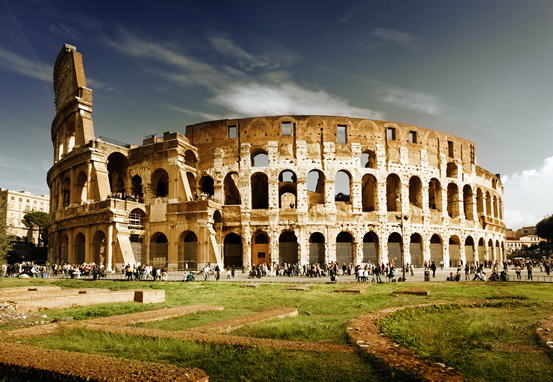
- The scenic spot of Britain
- Architectural decoration
- The buildings of ancient Rome
- Gothic architecture
- Baroque architecture
- Luo Man architecture
- The French Neo classicism architecture
- Renaissance architecture
- Romantic architecture
- Eclecticism architecture
- Classical revival architecture
- Rococo architecture
- Painting and sculpture
- Art performance
- Jewelry, antiques
- Fashion make-up class
- The diet leisure class
- Life Home Furnishing class
- Culture and education
- The folk custom activity
- Event exhibition class
- Add:Teisterbantstraat 44,6825CL Arnhem , Holland
- Tel:+0031-026-7370226
- Fax:+0031-026-7370226
- E-mail:teucaeu@hotmail.com
- Contacts:Mr.Thomas
INTRODUCTION:
古罗马建筑的类型很多。有罗马万神庙、维纳斯和罗马庙 ,以及巴尔贝克太阳神庙等宗教建筑,也有皇宫、剧场角斗场、浴场以及广场和巴西利卡(长方形会堂)等公共建筑。
The Colosseum or Coliseum, also known as the Flavian Amphitheatre (Latin: Amphitheatrum Flavium; Italian: Anfiteatro Flavio or Colosseo) is an elliptical amphitheatre in the centre of the city of Rome, Italy. Built of concrete and stone,it was the largest amphitheatre of the Roman Empire, and is considered one of the greatest works of Roman architecture and engineering. It is the largest amphitheatre in the world.
The Colosseum is situated just east of the Roman Forum. Construction began under the emperor Vespasian in 70 AD,and was completed in 80 AD under his successor and heir Titus.Further modifications were made during the reign of Domitian (81–96).These three emperors are known as the Flavian dynasty, and the amphitheatre was named in Latin for its association with their family name (Flavius).
The Colosseum could hold, it is estimated, between 50,000 and 80,000 spectators,and was used for gladiatorial contests and public spectacles such as mock sea battles, animal hunts, executions, re-enactments of famous battles, and dramas based on Classical mythology. The building ceased to be used for entertainment in the early medieval era. It was later reused for such purposes as housing, workshops, quarters for a religious order, a fortress, a quarry, and a Christian shrine.
Although in the 21st century it stays partially ruined because of damage caused by devastating earthquakes and stone-robbers, the Colosseum is an iconic symbol of Imperial Rome. It is one of Rome's most popular tourist attractions and has close connections with the Roman Catholic Church, as each Good Friday the Pope leads a torchlit "Way of the Cross" procession that starts in the area around the Colosseum.
The Colosseum, like all the Historic Centre of Rome, Properties of the Holy See in Italy and the Basilica of
Saint Paul Outside the Walls, was listed as a World Heritage Site by UNESCO in 1980. In 2007 the complex was also included among the New7Wonders of the World, following a competition organized by New Open World Corporation (NOWC).The Colosseum is also depicted on the Italian version of the five-cent euro coin.
